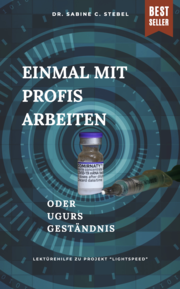Applied Clinical Pharmacokinetics and Pharmacodynamics of Psychopharmacological Agents (E-Book, PDF)
Applied Clinical Pharmacokinetics and Pharmacodynamics of Psychopharmacological Agents
eBook
Bibliographische Informationen
Format: Digitale Rechteverwaltung: Digitales Wasserzeichen
Beschreibung
Thisbook is a comprehensive resource on psychotropic medications, detailing thelatest methods for defining their characteristics, their use in differentpatient populations, and drug-drug interactions; an important collection ofinformation forclinicians, students, researchers, and members of thepharmaceutical industry alike.
Thefirst section provides the foundational principles of these drugs. Mathematicalmodeling of parameters that affect their entryto,and exit from, the centralnervous system (CNS) compartment are presented on an individual basis and thenapplied to target populations with specific disease states. Methods andcharacteristics that inform the transfer of these drugs from the laboratorybench to use in patient care are discussed, including imaging techniques,genetics and physiological barriers, such as the blood-brain barrier. The secondsection describes the characteristics of specific agents,nominally arrangedintodifferent therapeutic categories and with reference crossover use indifferent disease states. The pharmacologic characteristics of different drugformulations are explored in the context of their ability to improve patientadherence. The third section focuses on drug-drug interactions.Psychotropic medicationsfrom different categories are frequently prescribed together,or alongsidemedications used to treat comorbid conditions, and the information provided isdirectly relevant to the clinic, as a result.
Theclinical application of pharmacokinetics and pharmacodynamics of CNS agents hasmade significant progress over the past 50 years and new information is reportedby numerous publications in psychiatry, neurology, and pharmacology.Ourunderstanding of the interrelationship between these medications, receptors,drug transporters, as well as techniques for measurement and monitoring theirinteractions,isfrequently updated. However, with information presented on ahost of different platforms, and in different formats, obtaining the fullpicture can be difficult. This title aims to collate this information into asingle source that can be easily interpreted and applied towards patient careby the clinical practitioner, and act as a reference for all others who have aninterest in psychopharmacological agents.
Autorenportrait
MichaelW. Jann, Pharm.D., FCP, FCCP is Professor and Chair for the Department ofPharmacotherapy at the University of North Texas System College of Pharmacy(UNTSCP) located at the UNT Health Sciences Center (UNTHSC). Professor Jannreceived his Doctor of Pharmacy degree from the University of Southern Californiaand post-doctoral training in mental health pharmacy practice at the Universityof Tennessee Memphis College of Pharmacy. He has published over 230 peer-reviewarticles, abstracts, and book chapters and served as a primary investigator fornumerous clinical trials in psychopharmacology. Professor Jann serves on theeditorial boards of six peer-review scientific journals includingCNS Drugs,Molecular Diagnostics and Therapeutics, The Scientific World Journal Pharmacology Section, The Consultant Pharmacist, Journal of ClinicalPharmacology, andJournal of Pharmacy Practice.
Scott R. Penzak, Pharm.D., FCP, is Professor andVice Chair for the Department of Pharmacotherapy at the University of NorthTexas System College of Pharmacy (UNTSCP) located at the UNT Health SciencesCenter (UNTHSC). Professor Penzak received his Doctor of Pharmacy degree fromWayne State University and completed his post-doctoral training in infectiousdiseases at the University of Arkansas for Medical Science (UAMS). Prior toUNTSCP, he was the Director of the Clinical Pharmacokinetics Laboratory at the NIH. He has published over 150 peer-review articles,abstracts, and book chapters, and served as a principal investigator onnumerous pharmacokinetic and pharmacogeneticstudies. Professor Penzak serves onthe editorial boards of three peer-review scientific journals includingJournalof Clinical Pharmacology, Pharmacotherapy,and theInternational Journal ofPharmacokinetics.
Lawrence J. Cohen, PharmD, BCPP, FASHP, FCCP,FCP, FNAP is currently Professor of Pharmacotherapy at the University of NorthTexas System College of Pharmacy. Examples of Professor Cohens previousservice include, Global Director of CNS Research for Kendle International,Director of the Office of Clinical Trials for University of Cincinnati, andDirector of Pharmaceutical Services for the Oklahoma Department of MentalHealth and Substance Abuse Services. Professor Cohen received his Doctor of Pharmacydegree and post-doctoral training in psychiatric pharmacy from University ofSouthern California School of Pharmacy. Professor Cohen has been a BoardCertified Psychiatry Pharmacist since the specialty was recognized. His relevant service on Editorial Boards includeCurrentPsychiatry, Innovations in Clinical Neuroscience, Primary Care Companion of theJournal of Clinical Psychiatry, Drug Benefit Trends, Journal of the AmericanMedical Directors Association, CNS News andPharmacy Practice News.
Inhalt
Section 1. General Pharmacokinetic and Pharmacodynamic Principles ofPsychopharmacological Agents.- 1. Pharmacokinetic Properties.- 2. PharmacodynamicProperties.- 3. PET Scan and Other Biomarkers.- 4. PopulationPharmacokinetics.- 5. Drug Transporters (esp. Blood Brain Barrier).- 6. Pharmacogenomics.-Section 2. Clinical Pharmacokinetics and Pharmacodynamics ofPsychopharmacological Drug Classes.- 7. Antipsychotics oral typical agents,oral atypical agents, and long-acting injectable (LAI) antipsychotics.- 8. MoodStabilizers.- 9. Antidepressants tricyclics, selective serotonergic reuptakeinhibitors, serotonergic noradrenergic reuptake inhibitors, monoamine oxidaseinhibitors, and other antidepressants.- 10. Benzodiazepines and Other SedativeHypnotics/Anxiolytics.- 11. Opioid Analgesics.- 12. Stimulants and OtherNon-Stimulants for ADHD.- 13. Cholinesterase Inhibitors and Other AntidementaAgents.- 14. Anti-Addiction Agents.- 15. Anesthetics.- Section 3. ClinicallySignificant Drug Interactions With Psychopharmacological Agents.- 16.Antipsychotics.- 17. Mood Stabilizers.- 18. Antidepressants.- 19.Benzodiazepines and Other Sedative Hypnotics/Anxiolytics.- 20. OpioidAnalgesics.- 21. Stimulants and Other Non-Stimulants for ADHD.- 22. CholinesteraseInhibitors and Other Antidementa Agents.- 23. Anti-Addiction Agents.- 24.Anesthetics.
E-Book Informationen
„eBooks“ sind digitale Bücher. Um eBooks lesen zu können, wird entweder eine spezielle Software für Computer, Tablets und Smartphones oder ein eBook-Reader benötigt. Da es eBooks in unterschieldichen Formaten gibt, gilt es, folgendes zu beachten.
Von uns werden digitale Bücher in drei Formaten ausgeliefert. Die Formate sind EPUB mit DRM (Digital Rights Management), EPUB ohne DRM und PDF. Bei den Formaten PDF und EPUB ohne DRM müssen Sie lediglich prüfen, ob Ihr eBook-Reader kompatibel ist. Wenn ein Format mit DRM genutzt wird, besteht zusätzlich die Notwendigkeit, dass Sie einen kostenlosen Adobe® Digital Editions Account besitzen. Wenn Sie ein eBook, das Adobe® Digital Editions benötigt, herunterladen, erhalten Sie eine ASCM-Datei, die zu Digital Editions hinzugefügt und mit Ihrem Account verknüpft werden muss. Einige eBook-Reader (zum Beispiel PocketBook Touch) unterstützen auch das direkte Eingeben der Login-Daten des Adobe Accounts – somit können diese ASCM-Dateien direkt auf das betreffende Gerät kopiert werden.
Da eBooks nur für eine begrenzte Zeit – in der Regel 6 Monate – herunterladbar sind, sollten Sie stets eine Sicherheitskopie auf einem Dauerspeicher (Festplatte, USB-Stick oder CD) anlegen. Außerdem ist die Anzahl der Downloads auf maximal 5 begrenzt.
Weitere Artikel aus der Kategorie "Medizin/Pharmazie"
Lieferbar innerhalb ca. einer Woche

Lieferbar innerhalb 24 Stunden

Lieferbar innerhalb 14 Tagen

Lieferbar innerhalb 24 Stunden






